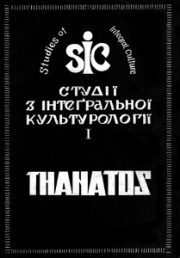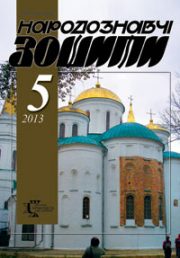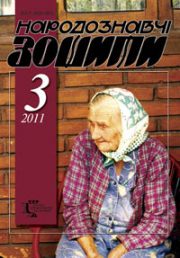The Ethnology Notebooks. 2022. № 1 (163), 192—201
UDK 94(100=161.2)”1973″:[930.253:070]
DOI https://doi.org/10.15407/nz2022.01.192
SECOND WORLD CONGRESS FREE UKRAINIANS: PREPARATION, CONDUCT AND SIGNIFICANCE
VAKHNIANYN Anna
- ORСID ID: https://orcid.org/0000-0002-3111-6183
- Graduate Student,
- Ivan Franko National University of Lviv,
- The Chair of Modern and Contemporary History of Foreign Countries,
- 1, Universyty street, 79000, Lviv, Ukraine,
- Contacts: e-mail: anya.vahnyanyn@gmail.com
Abstract. Introduction. The First World Congress of the Free Ukrainians was held in 1967. Its important achievement was the establishment of the sole coordination and representative institution of the entire Ukrainian nation outside the USSR, which operated on permanent basis. According to the Statute of the World Congress of the Free Ukrainians, the Congress, as the highest legislative body, was to be to held every six years in order to elect the new leaders and solve current problems.
Problem Statement. The time of office of the Congress Secretariat was due to come to its end in 1973, so the Second Congress was scheduled for November of the same year.
Purpose. Our article aims to trace the ways the Second World Congress of Free Ukrainians, was prepared for and convened, analyze the key decisions of the Congress and determine its role in the consolidation of the Ukrainian diaspora.
Methods. The principles of historicism, multifactoriality, theoretical analysis, generalization, and comparison lay ground for our study.
Results. The Second World Congress of the Free Ukrainians, which we may call «a true celebration of the Ukrainian identity», united our compatriots from all over the world to create a shared strategy for the development of the Ukrainian cause (українська справа) The Congress also confirmed that congresses for the consolidation of the Ukrainian nation and the activity of the hierarchical superstructure representing all the Ukrainians from abroad is a worthwhile idea.
Conclusion. The topics covered during the plenary sessions may roughly be subdivided into the following ones: 1) the organizational aspects of the structural parts of the World Congress of the Free Ukrainians; 2) the preservation of identity in the Ukrainian diaspora; 3) the situation in the USSR. We find that the most outstanding achievement of the Congress was adjusting its Statute to bring efficacy into the work of the Congress leaders as well as to create the strategy for saving the Ukrainian identity. The US and Canada politicians welcomed the ideas approved at the Second World Congress of the Free Ukrainians, while the Soviet Union responded to it negatively.
Keywords: Ukrainian diaspora, World Congress of Free Ukrainians, consolidation, Mykola Plaviuk, plenary session, Statute.
Received 11.01.2022
REFERENCES
- Yatsiv, A. (2019). First World Congress of Free Ukrainians: towards consolidation of world society. The Ethnology notebooks, 2 146, 387—402. Doi: 10.15407/nz2019.02.387 [in Ukrainian].
- (1973). Independent Ukraine (Part 1—2, pp. 253—254) [in Ukrainian].
- Syrnyk, I. (Ed.). (1969). First World Congress of Free Ukrainians: proceedings. Winnipeg; New York; London: The Secretariat of the World Congress of Free Ukrainians [in Ukrainian].
- (1973, april 17). Freedom [in Ukrainian].
- (1973, april 18). Freedom [in Ukrainian].
- Veryga, V., & Lytvyn, M. (Ed.).(2001). The Second World Congress of Ukrainians. In Vasyl Veryga. Word and deed. Selected articles, reports, intelligence, biographies. 1946—1988 (Pp. 155—158). Lviv: Ivan Krypyakevych Institute of Ukrainian Studies of the National Academy of Sciences of Ukraine [in Ukrainian].
- Central State Archives of Foreign Archival Ucrainica (TsDAZU). Fund 36. Description 1. Case 4: Documents (protocol of the meeting of the preparatory committee, program, lists of organizations, delegates, media representatives, meeting rules, regulations, financial statements, resolutions, lists of members of the Secretariat, communique, newspaper’s articles about the congress, draft collection of materials ets). April 14, 1973—September 30, 1985 [in Ukrainian].
- Didiuk, V. (Ed.). (1986). Second World Congress of Free Ukrainians: proceedings. Toronto; New York; London: The Secretariat of the World Congress of Free Ukrainians. [in Ukrainian].
- (1973, july 11). Freedom [in Ukrainian].
- (1973, september 7). Freedom [in Ukrainian].
- (1973, october 4). Freedom [in Ukrainian].
- (1973, november 1). Freedom [in Ukrainian].
- (1973, november 8). Freedom [in Ukrainian].
- (1973, october 30). Freedom [in Ukrainian].






